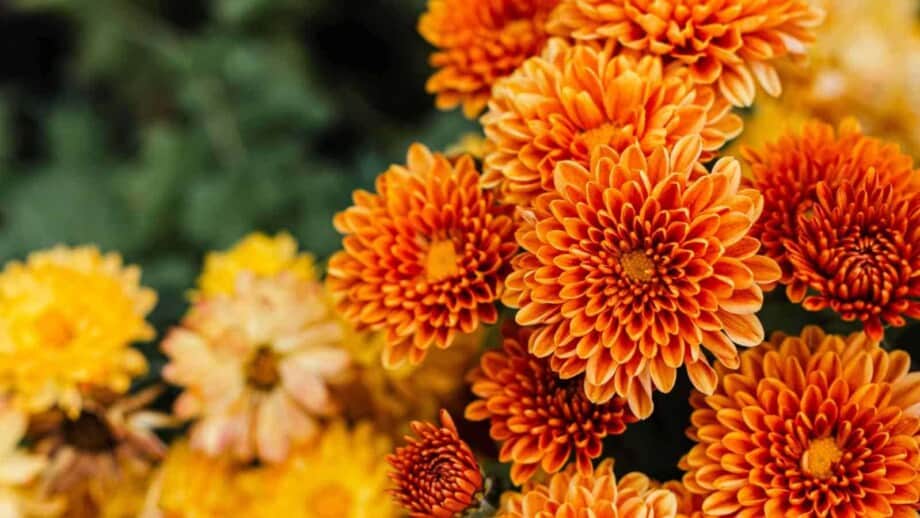Chrysanthemums, often referred to as “mums”, are a genus of about 40 species of flowering plants in the Asteraceae family.
They originate from East Asia and northeastern Europe and are particularly popular in the floral industry due to their vibrant colors and late bloom period. Characterized by their notable disk flowers, ray florets, and available in a dazzling variety of cultivars, chrysanthemums are a staple in fall-blooming ornamentals.
These loving plants are perennials, which means they bloom year after year, making them a favorite among gardeners. From aster-like to daisy-like, spoon and quill flower forms, garden mums vary in different shapes and shades.
Their leaves are alternately arranged, divided into leaflets with toothed or occasionally smooth edges, adding to their beauty and appeal.
In their natural habitat, chrysanthemums would bloom in early spring. However, in the world of horticulture, we often associate these vibrant cultivars with late summer and autumn, when the majority of chrysanthemum flowers bloom.
Popular in supermarkets, garden centers and big box stores, the hardiness of these annuals is appreciated by novice and master gardeners alike.
Chrysanthemums are not only beautiful but also beneficial. They have been cultivated as edible plants and have been used in traditional medicine.
Plus, certain species are known for their insect-repelling properties. As a companion plant, they provide a beneficial influence on the growth and health of their neighboring plants.
As a master gardener, I’ve grown many mums over the years and have learned through experience how to care for them properly. I’ll share all my tips in this complete guide to planting, growing, and caring for chrysanthemums.

Botanical Name: Chrysanthemum
Common Name: Chrysanthemums, Mums, Hardy Mums, Garden Mums
Family: Asteraceae
Plant Type: Perennials, Annuals
Hardiness Zones: 5 – 9 (USDA)
Sun Exposure: Full Sun
Soil Type: Well-drained soil
Soil pH: Neutral to slightly acidic
Maturity: Early Spring to first frost
Height: 1 to 3 feet
Spacing: 2 to 3 feet apart
Bloom Time: Late summer and fall
Flower Color: Various shades from white to deep burgundy
Native Area: East Asia
Chrysanthemum Plant Care
Chrysanthemums, colloquially known as hardy mums, are members of the asteraceae family and belong to the genus Chrysanthemum. These cultivars are perennial beauties often encountered in supermarkets and big box stores during the fall as charming potted plants.
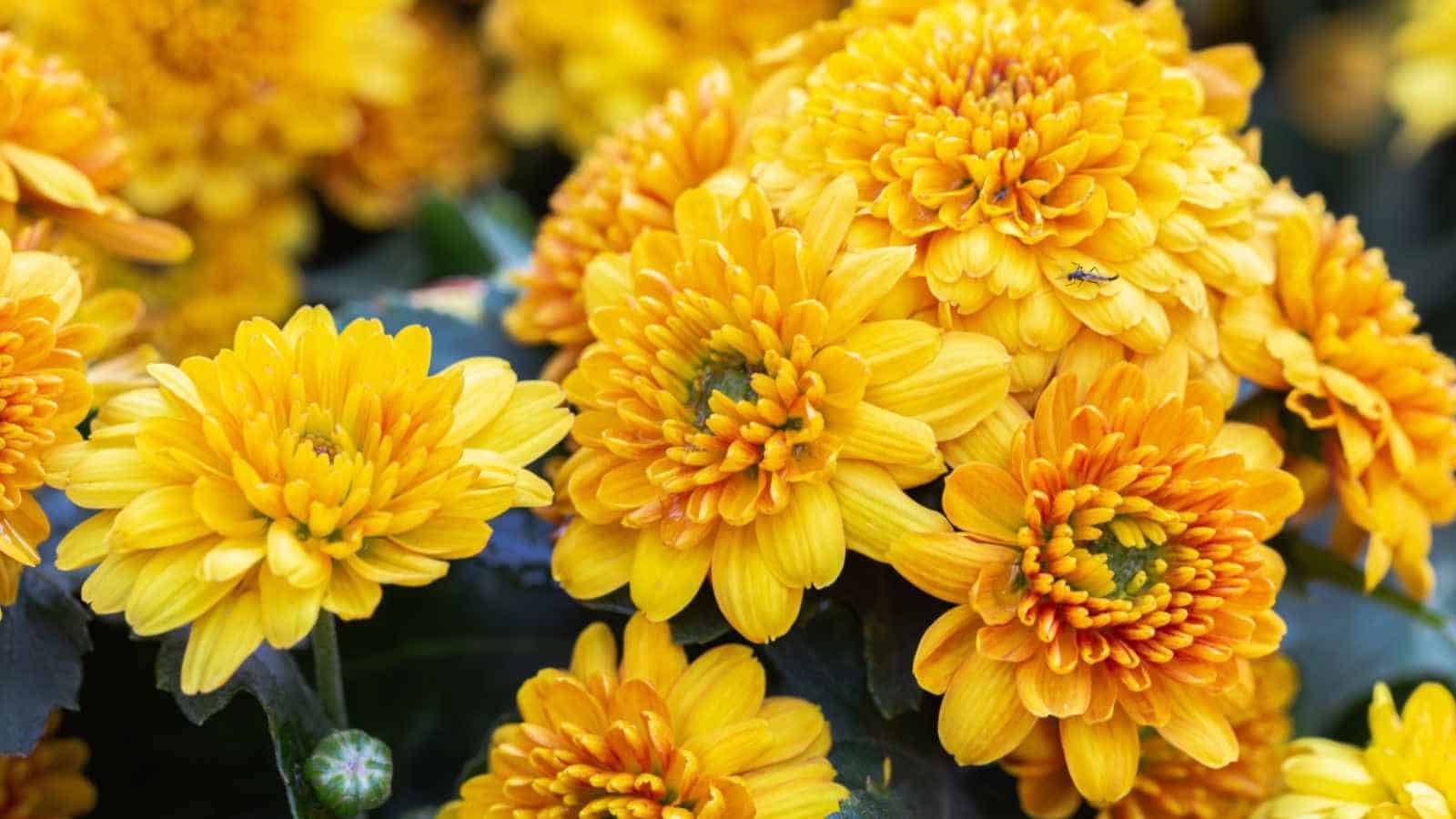
In early spring, prepare a full sun site with well-drained soil that retains enough moisture to encourage the growth of new shoots. Weed control is crucial throughout the growing season to allow your chrysanthemums to bloom in a wide array of shades come fall.
Never forget to deadhead spent blooms to promote productive growth of flower buds for the next season, but cease this practice when the first frost approaches to allow the plant to naturally prepare for winter.
Regular checks for common pests like aphids will ensure your chrysanthemums continue to flourish.
Light
Chrysanthemums thrive under full sun. Contrary to some cultivated species, these perennials crave abundant light to fully express their vibrant shades during the growing season.
Ideally, they require a minimum of six hours of direct sunlight per day. Without adequate light, the plant’s stems may become weak and the flower buds may fail to develop properly.
If you’re growing chrysanthemums in a pot or indoors, position it near a sunny spot to ensure the plant meets its light requirements.
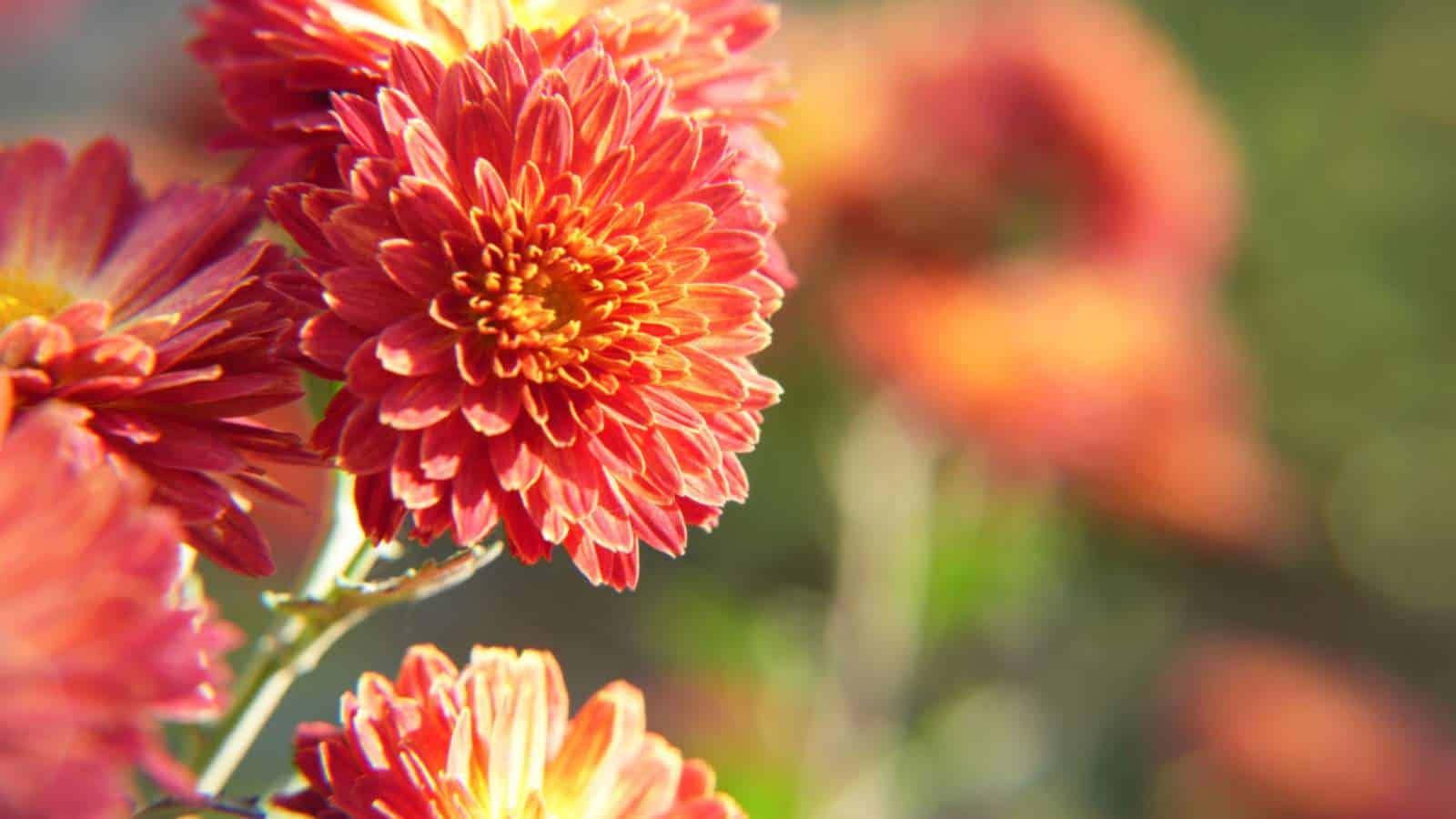
Soil
Chrysanthemums thrive in well-drained soil. These cultivated species from East Asia perform best in organic rich soil which has a neutral to slightly acidic pH level.
For optimum growth, the soil should hold good moisture yet not become waterlogged. In addition, garden mums, much similar to daisies and asters of the asteraceae family, prefer soil that is free from competition by weeds.
While little water might be beneficial in establishing the new shoots, proper watering can help reduce susceptibility to insects like aphids, further strengthening the stems and leaves.
Incorporating compost to the soil at the start of the growing season can enhance its fertility and encourage robust chrysanthemum flowers.
Water
Chrysanthemums demand regular watering to develop their vibrant blooms. Proper hydration encourages the emergence of new shoots and healthy foliage, key indicators of a thriving plant.
These fall-blooming ornamentals prefer soil that is consistently moist but not waterlogged. Overwatering can lead to a condition known as root rot; however, little water can also be detrimental, leading to wilted leaves and weak stems.
The water requirement generally increases during the growing season and any periods of sunshine, but it’s crucial to allow the top layer of the soil to dry out between waterings to avoid any potential waterlogging.
It’s worth noting that potted chrysanthemums may require more frequent waterings due to the confined pot space.
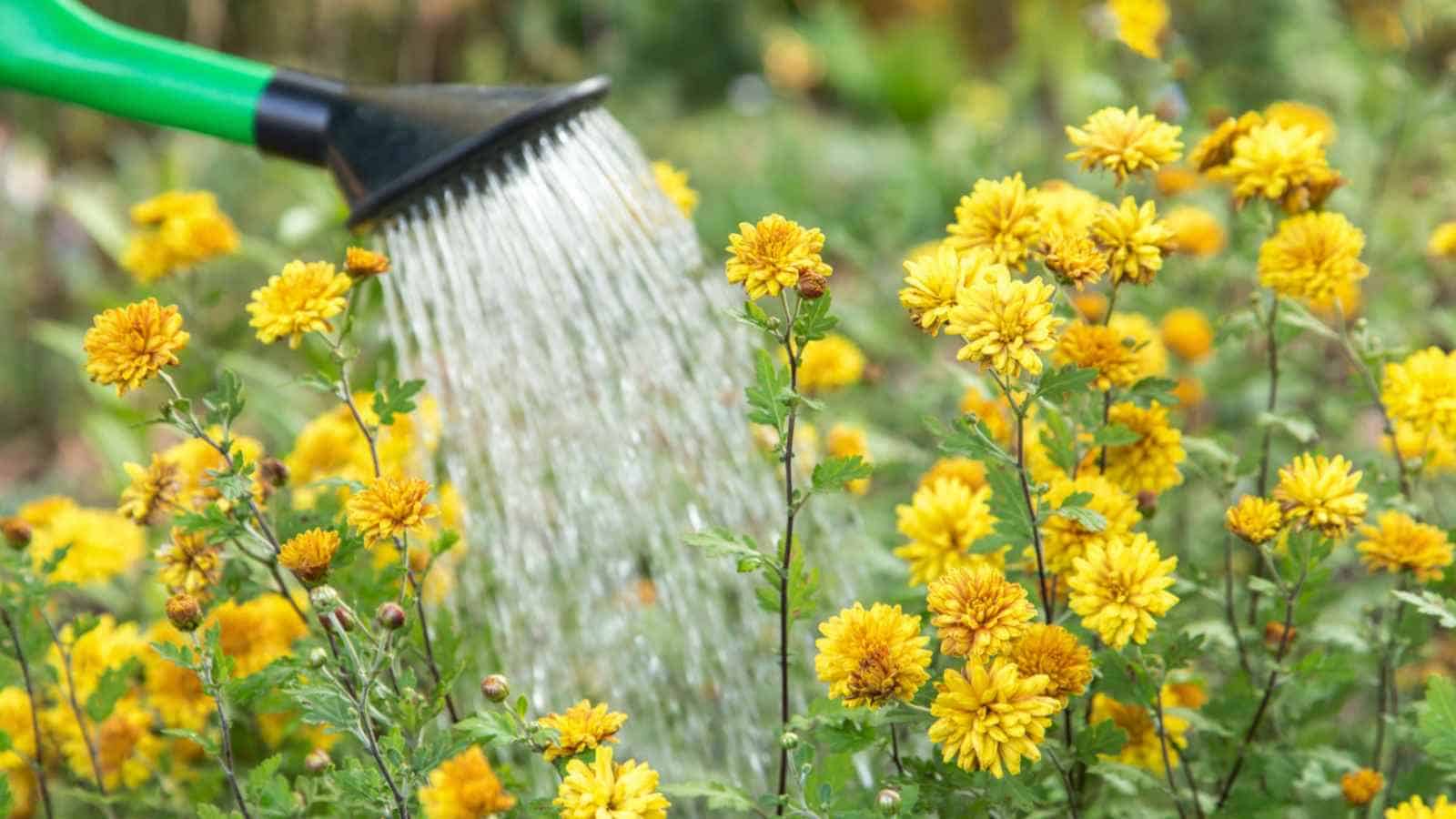
Temperature and Humidity
Chrysanthemums bloom beautifully in the mild temperatures of fall, although they can survive in varying climates. They are perennials and require regulated temperatures for maximum growth.
They thrive best in full sun and cooler climates with the temperature between 60 to 70°F, maintaining a vivid color spectrum from daisy white to varying shades of pink and lavender.
For humidity, these cultivated species native to east Asia prefer average to high levels. However, ensure the moisture does not lead to a buildup of fungal diseases in flower buds or new shoots.
Regular monitoring of the pot or garden bed for good air circulation can help maintain the right level of humidity, promoting a healthier growing season for your chrysanthemums.
Fertilizer
Chrysanthemums are heavy feeders and require regular fertilization throughout the growing season. Fertilizer should be applied once a week during early spring to foster the development of new shoots and to stimulate increased flower production.
Balanced fertilizers are usually applied to supply the necessary nutrients to the chrysanthemum flowers. When fertilizers are being applied, care should be taken to keep them from direct contact with the leaves to avoid burn.
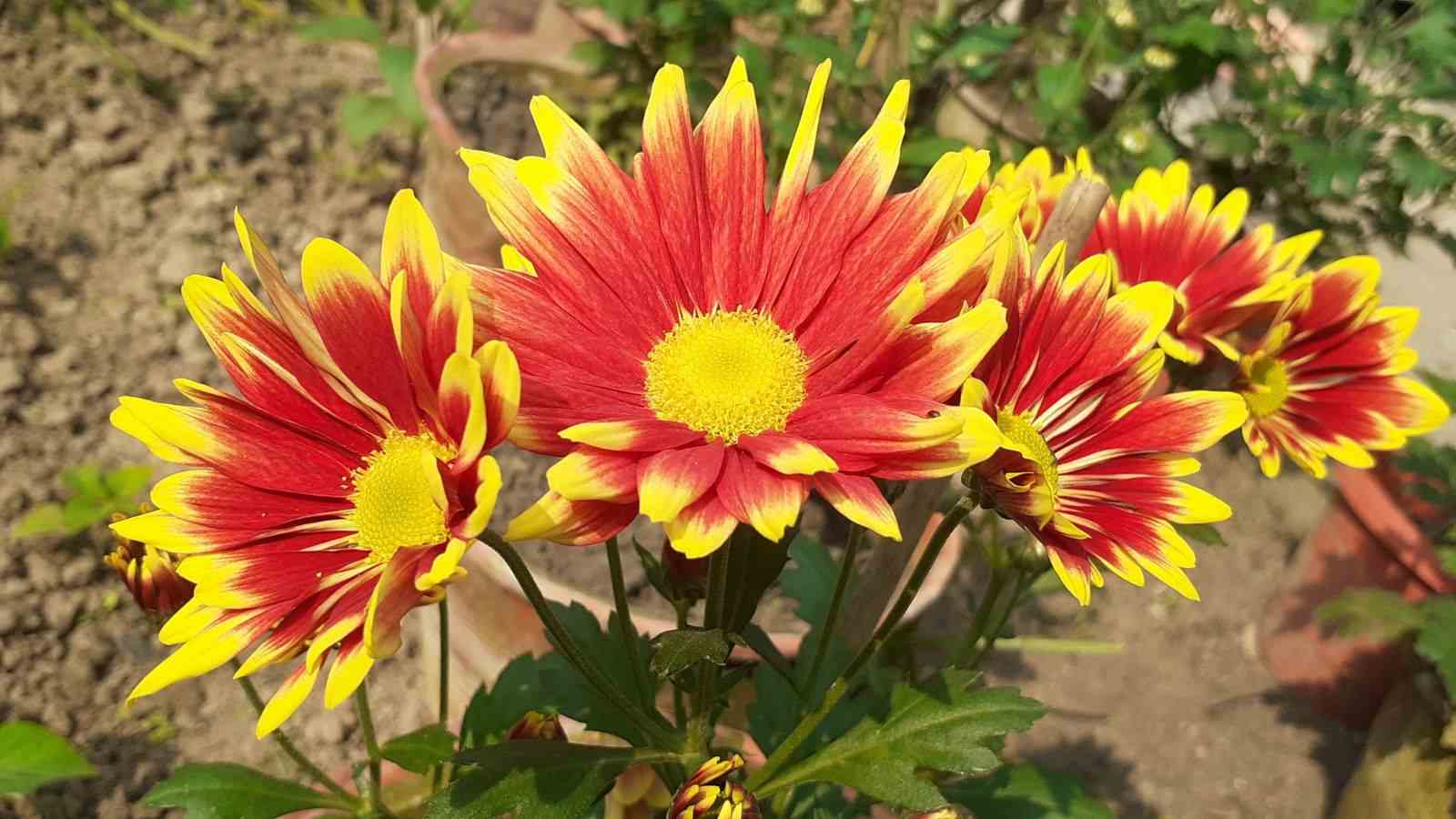
As fall approaches, reduce fertilizer application to prepare the plant for the first frost. This meticulous care will ensure your chrysanthemums bloom beautifully, enhancing your garden with their charming shades.
Types of Chrysanthemum
Garden Mums
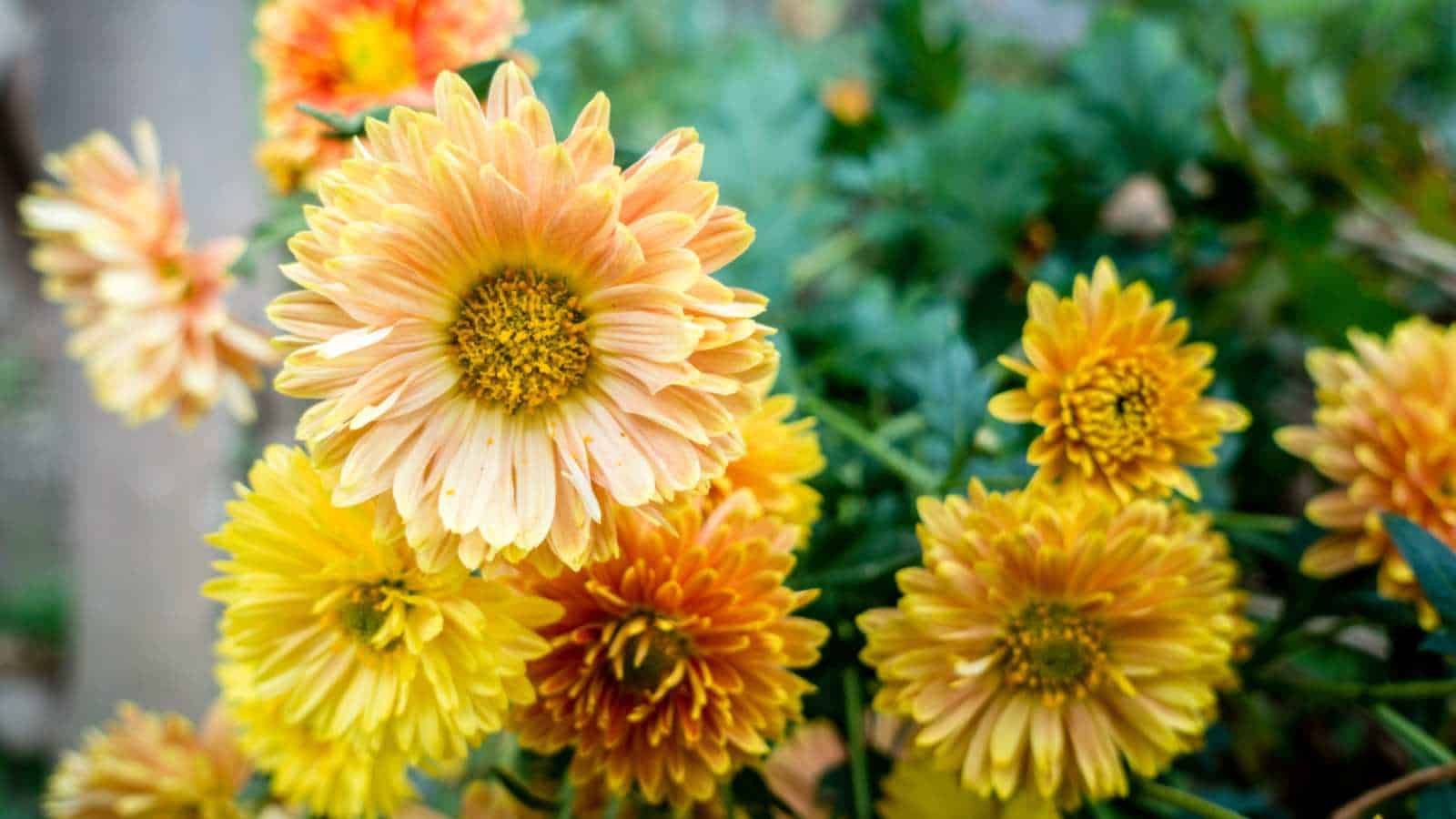
Belonging to the Asteraceae family, garden mums, commonly known as hardy mums, are enjoyed for their richly-colored and vibrant flower buds.
These iconic fall-blooming ornamentals grow in a plethora of shades, including the classically celebrated reds, oranges, pinks, and yellows. They are considered perennials, sturdy enough to withstand the first frost in many regions.
Native to East Asia, specifically China and Japan, these Asteraceae species are now cultivated worldwide, appearing ubiquitously in supermarkets and big box stores during the peak of their growing season.
Florist’s Daisy
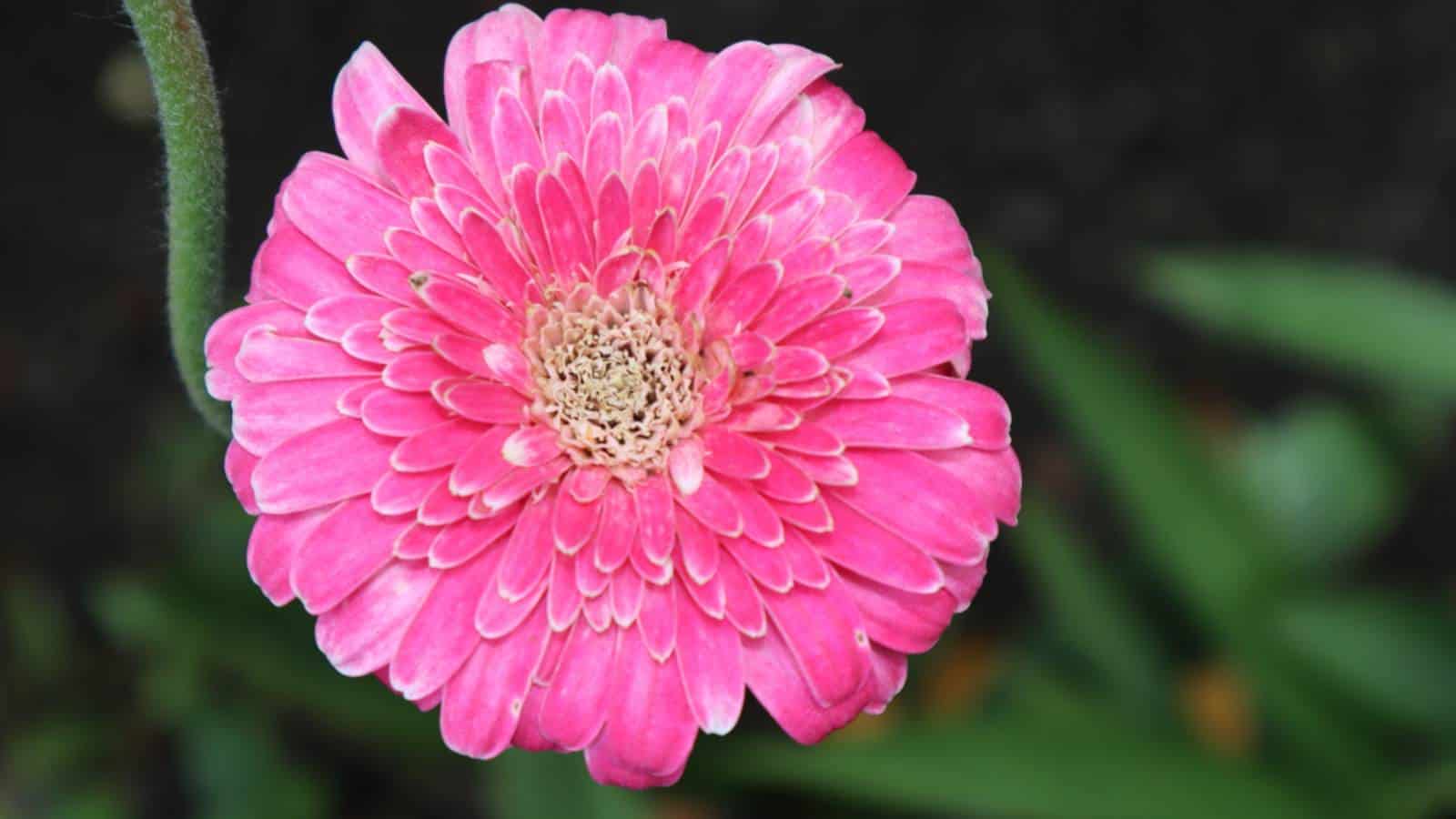
Prominent members of the Chrysanthemum genus, Florist’s daisies are often utilized within the floral industry as a popular cut flower. Your garden’s insects, including bees and butterflies, are apt to flock towards the disk flowers and ray florets of this daisy, making it an excellent choice for those looking to support local pollinators.
Like the garden mum, these daisies are members of the Asteraceae family, sharing similar growing conditions with needs for full sun and well-draining soil.
However, unlike their chrysanthemum relatives, these are usually annuals and require newly planted cultivars each spring.
Lavender Chrysanthemum
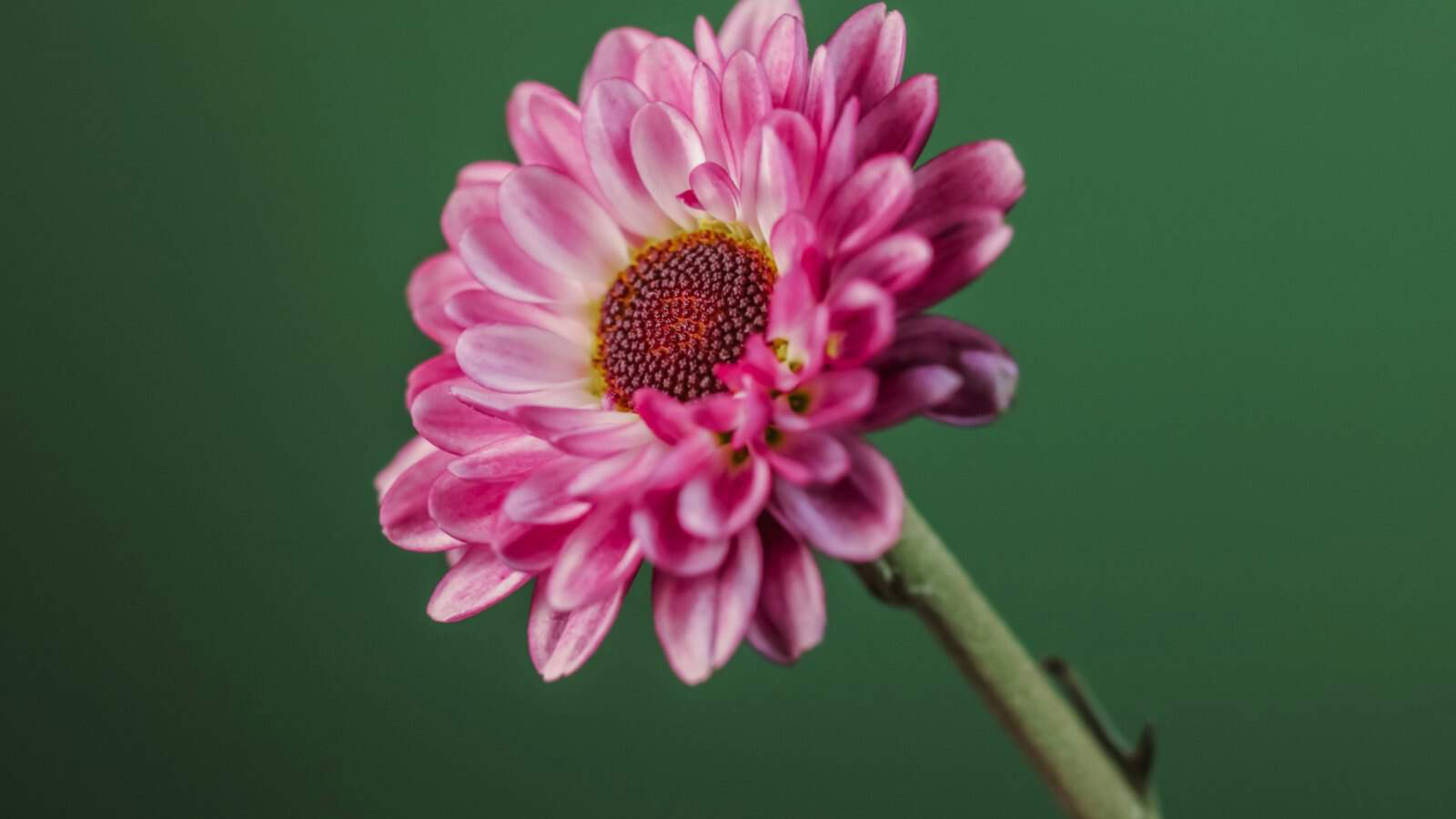
Among the cultivated species of chrysanthemums, Lavender varieties are particularly striking with their unique combination of purple hues and soft, spoon-like petals.
Lavender Chrysanthemums, also characterized into quill, spoon, and aster classes, require little water compared to other species. They’re recommended for early spring planting to foster new shoots and lush foliage before the summer heat sets in.
Being a prime target for aphids, keep these plants clear from weeds and maintain a check on their moisture levels to create glorious bloom chrysanthemums.
Edible Chrysanthemums

Contrary to what one might think, not all chrysanthemums are solely ornamentals. Some are edible plants and used extensively in East Asian cuisine.
These chrysanthemums are bred for their leaves, rather than their flowers, and are a pleasant surprise for many gardeners unfamiliar with this side of the genus.
Their strong resilience against pests makes them excellent companion plants for other species craving protection.
Like all chrysanthemums, they still require full sun and a decent amount of spacing between plants to reduce excess moisture and potential disease.
How to Plant Chrysanthemum From Seed
Choosing the Right Seed
Whether you’re leaning towards chrysanthemum flowers with quill, spoon, or ray florets, you need to select healthy, viable seeds. The type of flower bud – disk flowers or ray florets – will vary from species to species, providing various shades and ornamental forms.
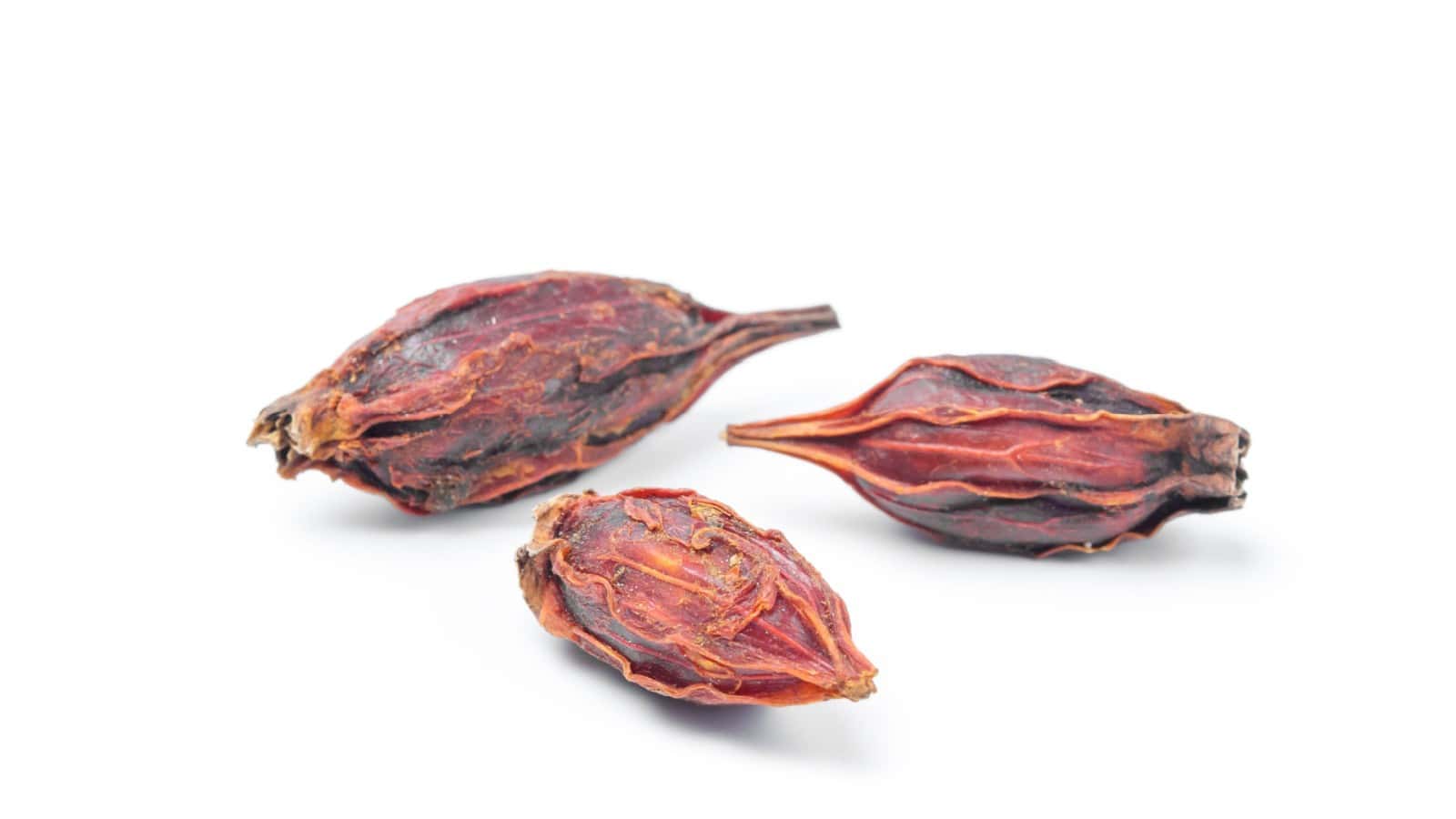
Beginning the Planting Process
Early spring is the optimal time to start sowing your chrysanthemum seeds indoors. Fill a pot with high-quality, moist soil rich in organic matter.
Evenly scatter the seeds across the surface of the soil. Don’t cover the seeds; they need to be exposed to light to germinate.
Cultivars Growth and Care
These perennials will start to produce new shoots in a few weeks. It’s essential to keep the soil moisture-balanced. Be careful not to overwater as this can lead to root rot.
During the growing season, prune the stems back by a third to encourage a more compact, abundant bloom. Chrysanthemums aren’t heavy feeders, so a little fertilizer goes a long way.
Pest Management and Companionship Planting
Like all other plants within the Aster family, chrysanthemums can be a magnet for insects such as aphids. Companion planting with species such as daisy, aster, and lavender which attract beneficial insects can create an integrated pest management system.

Transfer and Maintenance
Post the last threat of frost in the first frost zone, transfer your young plants outdoors. Mold them to create a fuller, bushy foliage.
Chrysanthemums are relatively hardy and resistant to most diseases. Still, it’s best to keep an eye out for any unhealthy leaves or potential weeds outcompeting your mums.
Care in the Final Blooming Stage
As these perennial plants enter their fall bloom chrysanthemums stage, continue providing adequate care, enough moisture, and sunlight.
Before you know it, your garden will be embellished with the vibrant, pleasing colors of blooming chrysanthemums.
How to Propagate Chrysanthemum
Step 1: Preparing for Propagation
In the early spring, set up a pot with fresh garden soil that is rich in organic matter. Ensure the pot has good drainage to manage moisture.
Chrysanthemums thrive in full sun, so find a sunny spot where your plant can soak up the rays. It’s also beneficial to consider companion plants such as lavender or daisy, which can help deter harmful insects like aphids.
Step 2: Propagation via Cuttings
To propagate chrysanthemums, start with a cut flower. Carefully slice off a few stems, preferably those with new shoots, but refrain from selecting those with a bloom.
Remove any leaves on the lower half of the stem. This process can be completed with a sharp garden quill or knife.
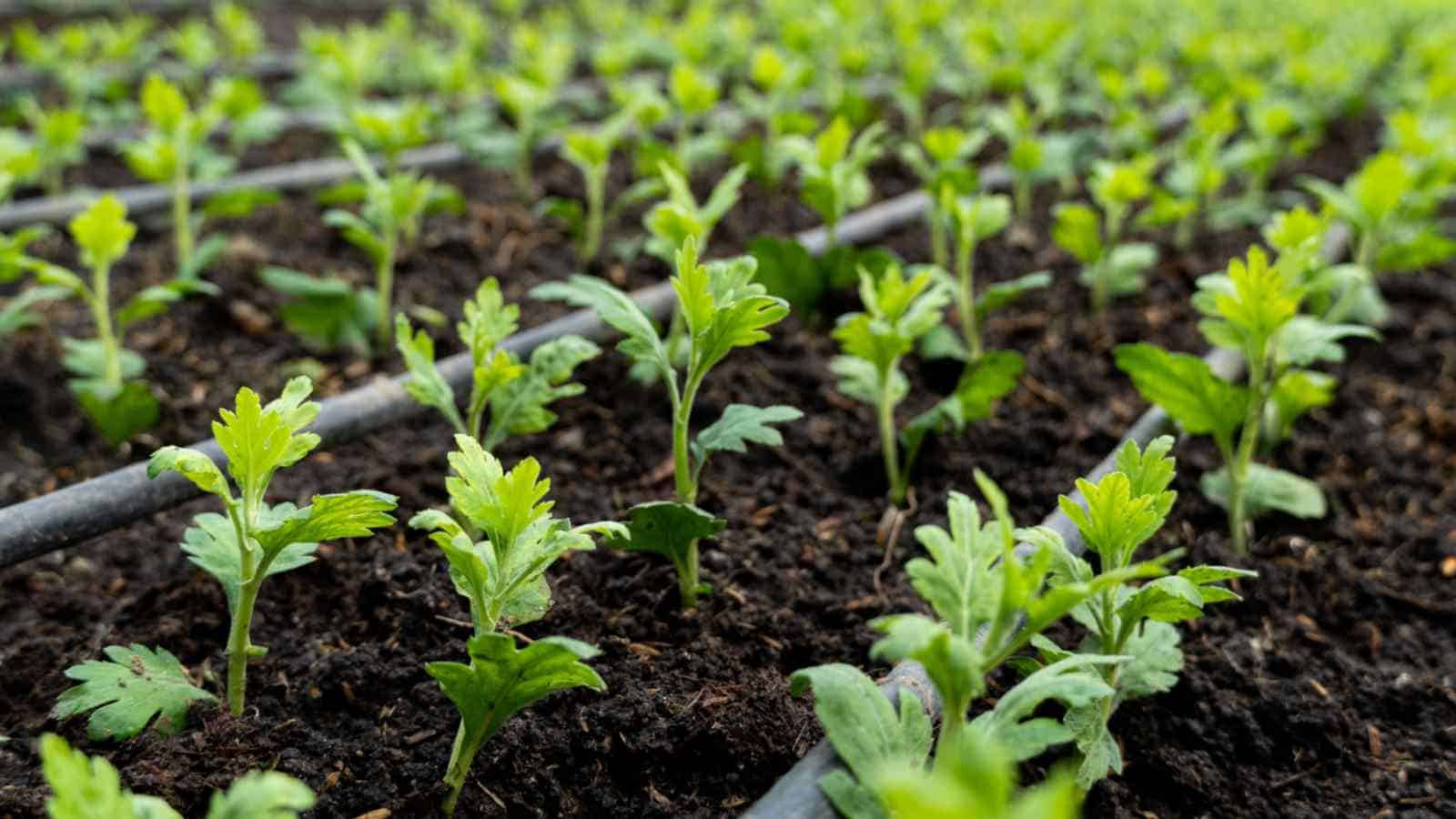
Step 3: Planting and Care
Insert the cut chrysanthemum stems into the prepared pot, and water it with just enough moisture to dampen the soil. These plants need little water and are prone to root rot if overwatered.
As these new shoots grow during the growing season, apply a spoon of garden compost frequently to provide the necessary nutrients.
Step 4: Monitoring Growth
Throughout the growing season, monitor the plant’s progress. Check for signs of any weeds, insects or diseases, and clear them out as soon as possible.
When the chrysanthemum flowers bloom, the beautiful shades of their ray florets and disk flowers become a great addition to any garden or even a cut flower supply for supermarkets and big box stores in the floral industry.
Step 5: Preparing for Winter
To prepare the chrysanthemum for winter, keep an eye on foliage health and reduce watering as colder weather approaches.
After the first frost, you can trim the plant down to the ground. This hardy plant will survive low temperatures and re-sprout when early spring arrives, allowing you to cultivate a new round of beautiful chrysanthemum flowers.
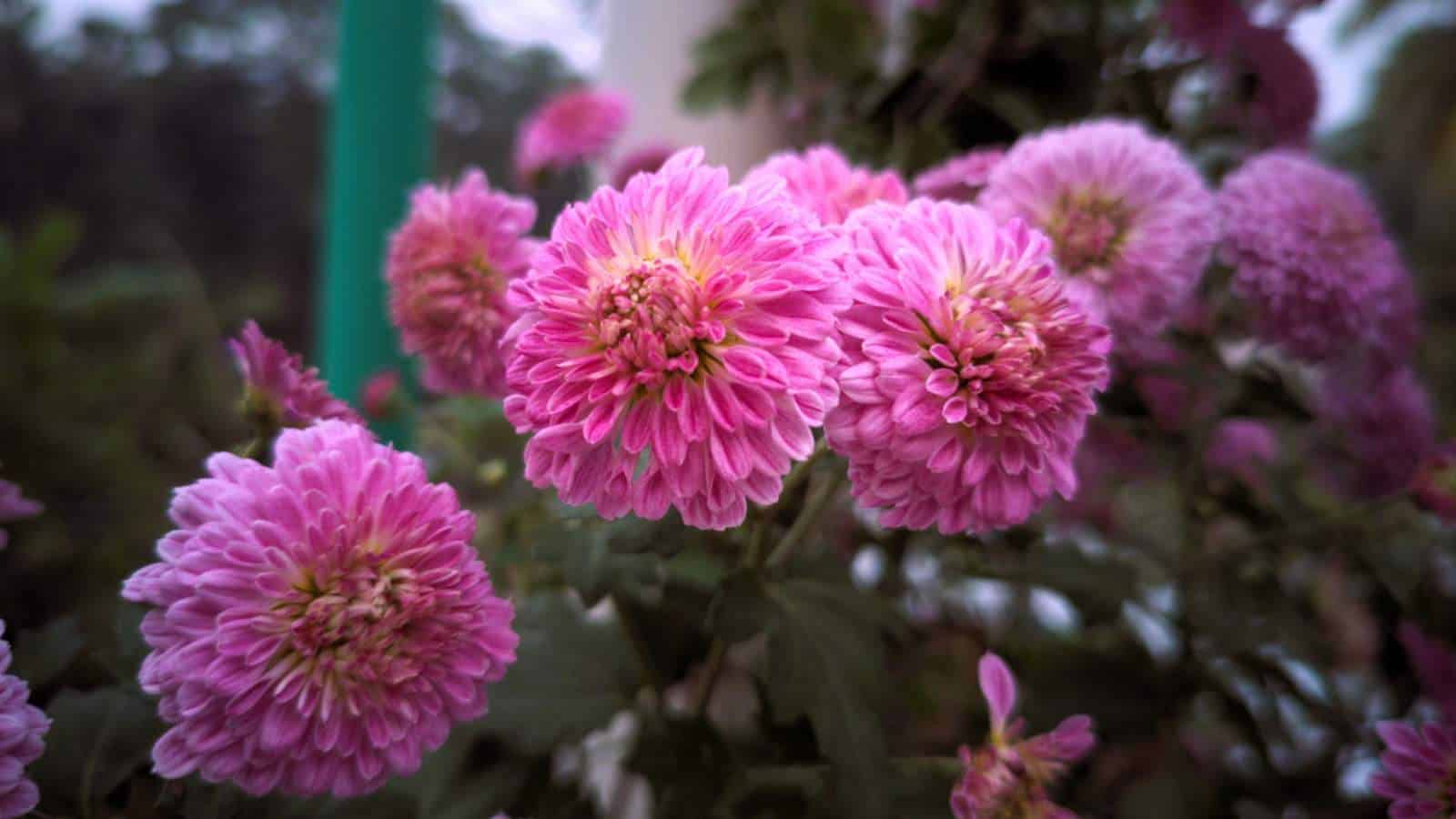
How to Pot or Re-Pot Chrysanthemums
Step 1: Choose the Right Pot
Select a pot that provides ample room for the roots to grow and has good drainage to prevent excess moisture.
Step 2: Preparing the Pot for Planting
Before you place your chosen chrysanthemum in the pot, make sure it is clean and free of any weeds which could deprive your chrysanthemums of nutrients.
Add a good quality potting mix, ensuring the right balance of moisture and nutrient content for the growing season. Chrysanthemums require a little water but should not be saturated as this can lead to root rot.
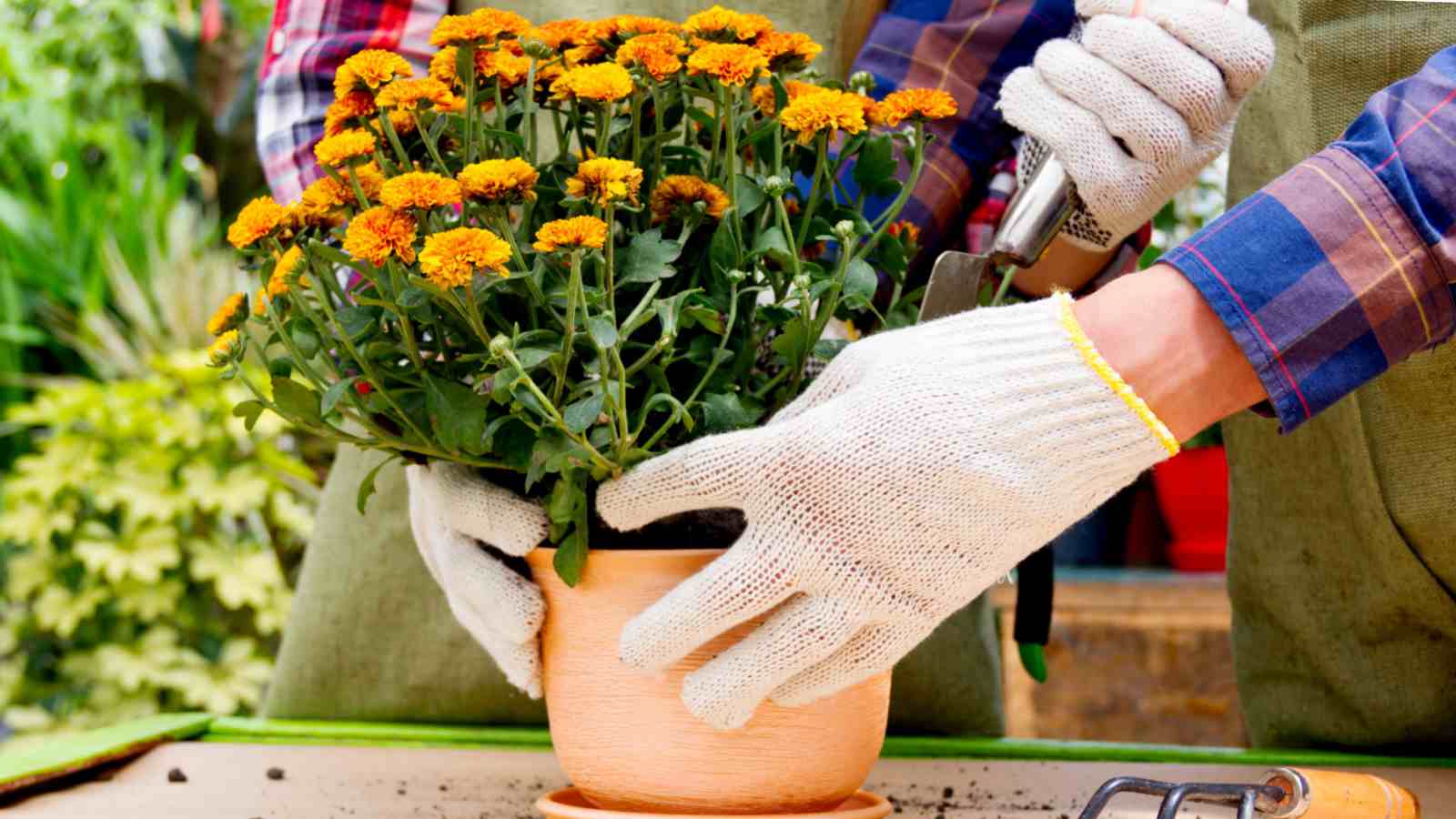
Step 3: Transplanting the Chrysanthemum into the Pot
Remove your chrysanthemum gently from its current pot, maintaining the integrity of the root ball.
Position it in the new pot and begin to cover the roots with the potting mix, pressing lightly to secure the plant. Ensure the stems are upright and the leaves have plenty of space for photosynthesis.
Common Pests and Plant Diseases for Chrysanthemums
Aphids
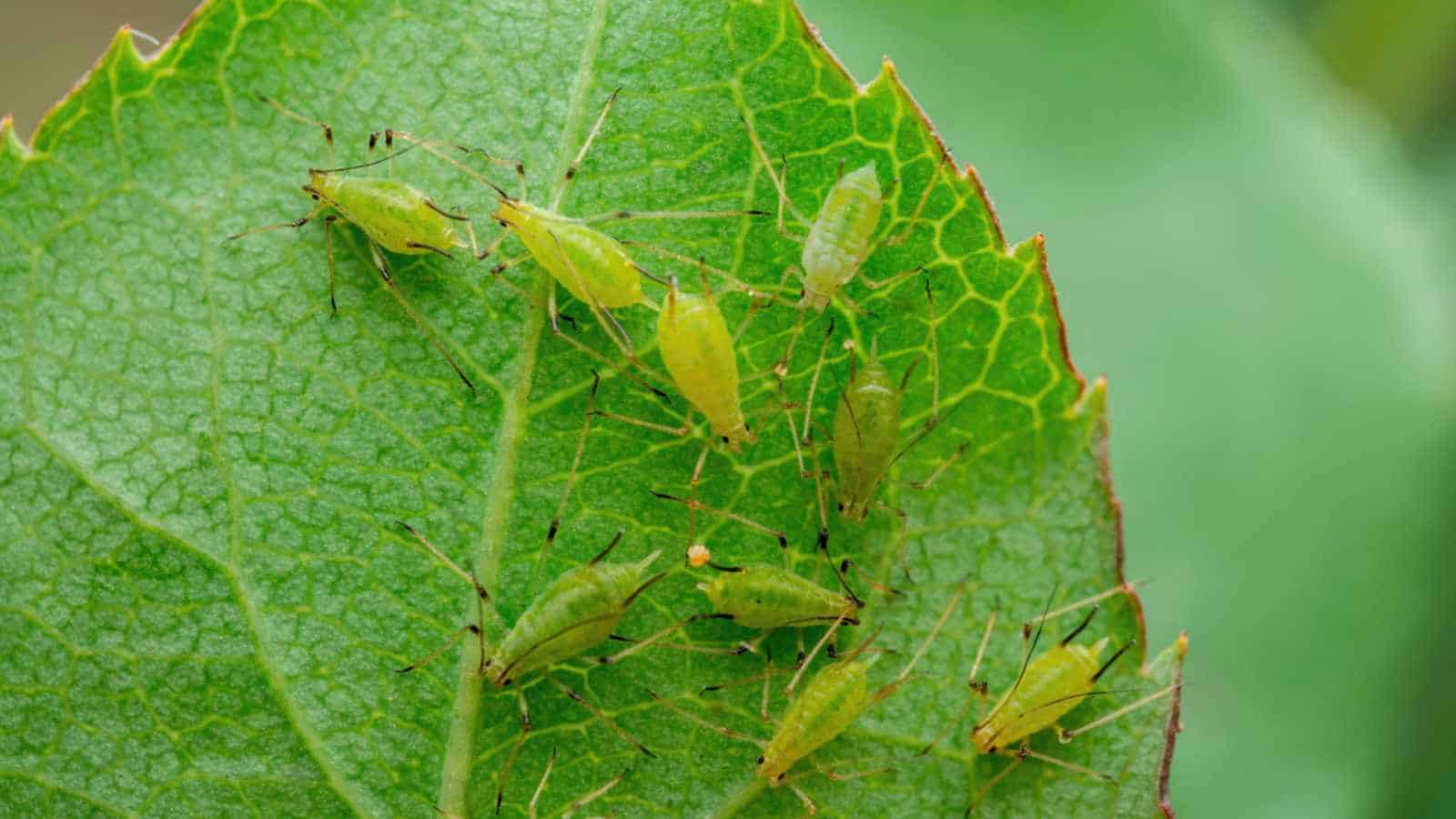
These tiny insects are a common pest among Chrysanthemums and other flowering species within the Asteraceae family. They feed on the sap in stems and new shoots, which can cause distorted flower buds and leaves.
Aphids can be especially problematic during the growing season when chrysanthemums are vulnerable to infestation.
Regular spraying of insecticides and introducing natural predators such as ladybirds can help in managing aphids.
Powdery Mildew

This fungal disease is not uncommon among chrysanthemums, particularly among cultivars that lack fungal resistance.
Powdery mildew coats leaves, stems, and flower buds with a white, powdery substance, often inhibiting photosynthesis and causing the leaves to wilt. The disease thrives in areas with high moisture and poor air circulation.
To avoid an outbreak of this disease, ensure that your chrysanthemums are planted in full sun and that leaves are kept dry.
Leaf Spot and Stem Rot
Leaf spot and stem rot are caused by a type of fungus that thrives especially in wet, humid environments. Infected chrysanthemum plants show browning and rotting stems and spots on leaves.
The disease can be controlled by removing infected plant parts, applying suitable fungicides, and improving the growing conditions to reduce moisture levels.
Resist overwatering and allow for ample spacing between plants to ensure better air circulation.
Spider Mites
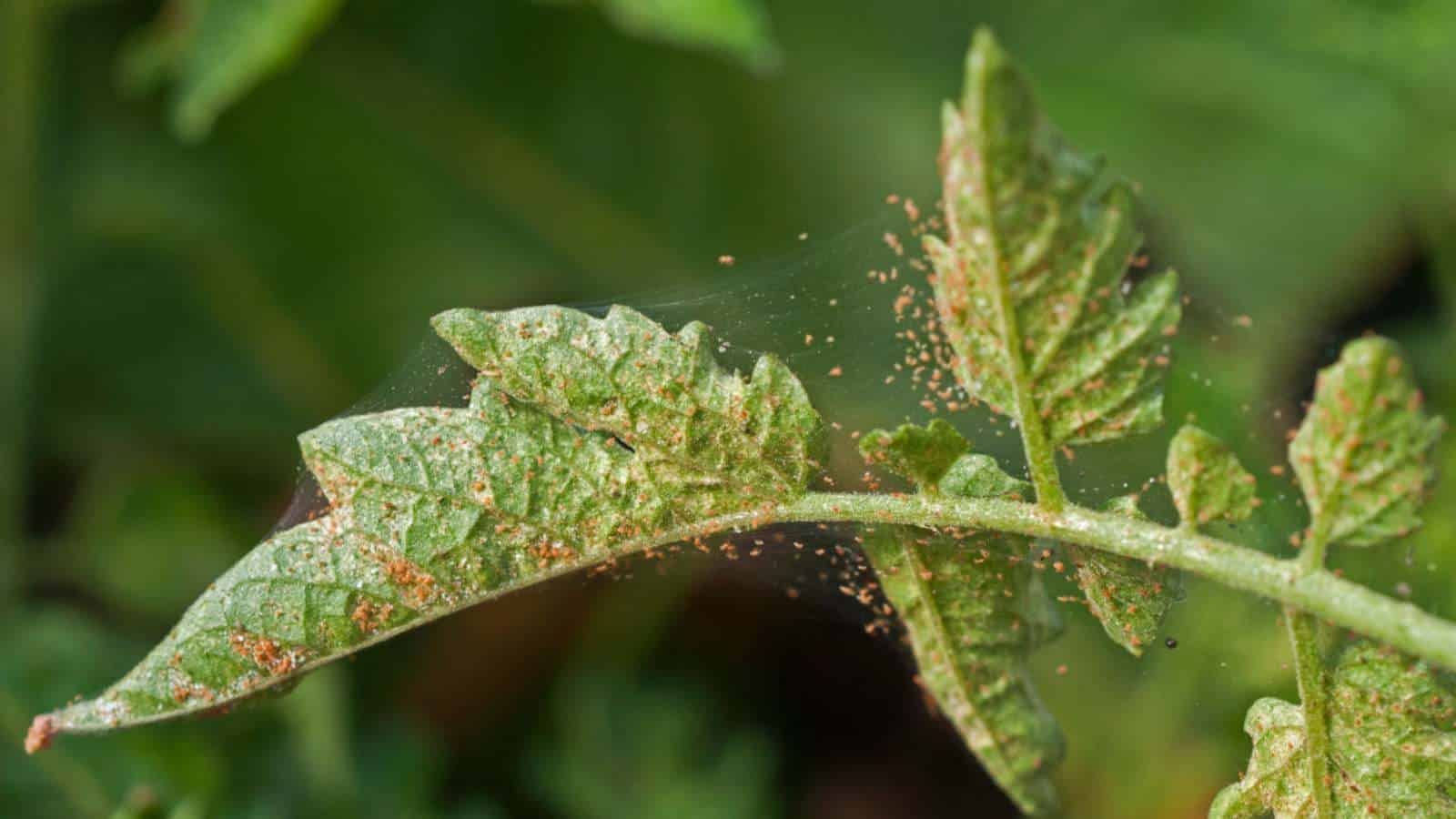
Spider Mites pose a significant threat to chrysanthemum flowers. These tiny arachnids suck sap from the plant, causing the leaves to turn yellow and fall prematurely.
You might notice fine webbing on the plant, a common sign of mite infestation. Control measures include using miticides and ensuring optimal watering to prevent plant stress, making it less attractive to mites.
Common Plant Problems and Solutions for Chrysanthemum
Brown Tips
If you’re finding brown tips adorning your chrysanthemum’s leaves, don’t panic. This is often the result of insufficient moisture or over-fertilization.
The solution is increasing your watering regimen during the growing season and cutting back on the fertilizer.
It’s important to ensure that the perennials, including chrysanthemums, receive ample water to keep the foliage green and healthy.
Yellowing Leaves
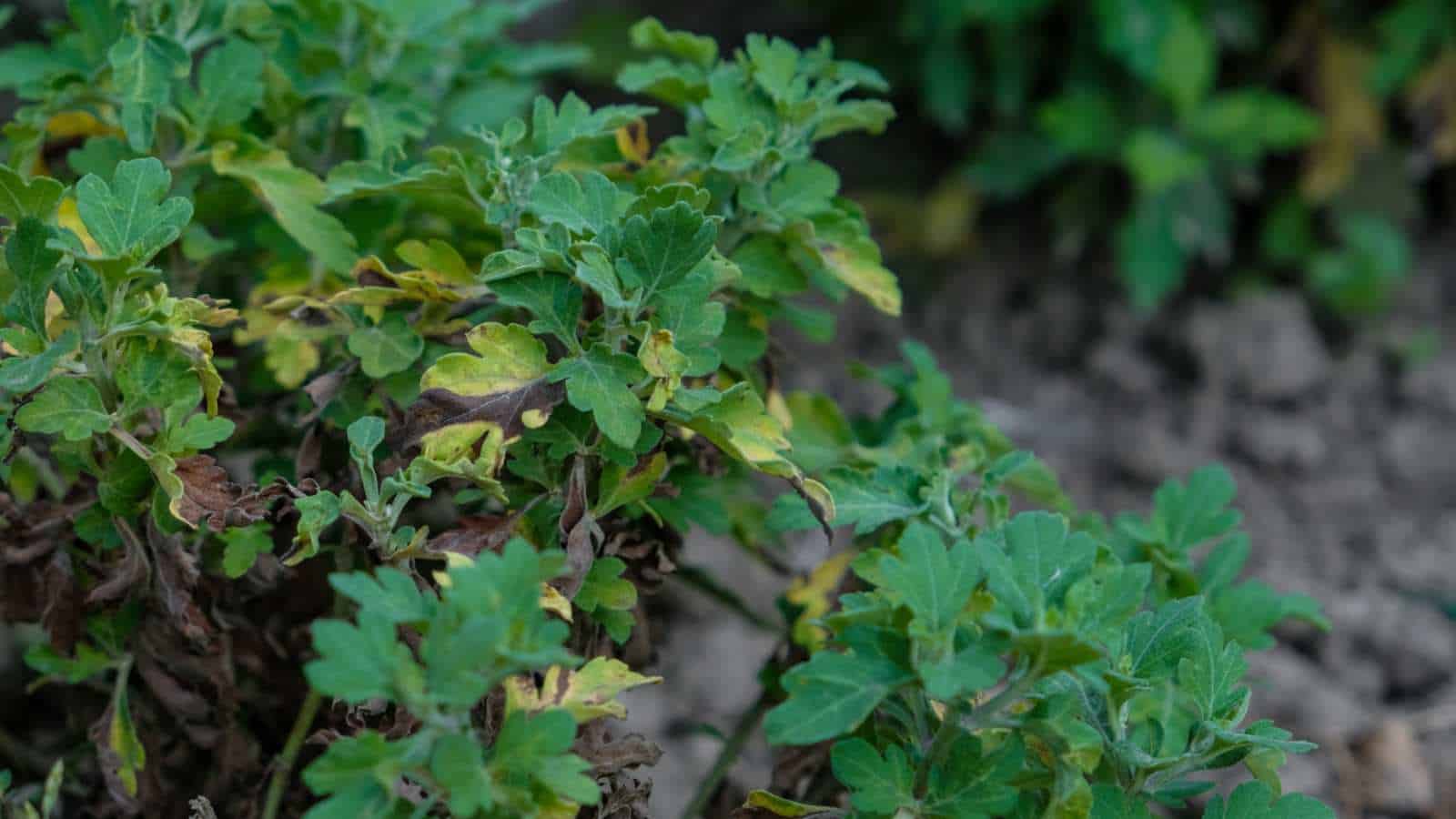
If the leaves of your chrysanthemum flowers start to yellow, they could be victims of a common troublemaker – aphids. Aphids are tiny insects that suctions the sap out of plants, leaving them looking dull and yellow.
The best approach to controlling these pests is by introducing natural predators like ladybugs to your garden. Alternatively, one could use insecticidal soap spray to keep the bugs at bay.
Chrysanthemums not Blooming
If your mums aren’t producing beautiful blooms, they may not be getting enough sunlight.
Mums need full sun, which means at least 6 hours of sunlight per day. Transfer them to a sunnier location or consider using grow lights if indoor space is an issue.
Wilting Chrysanthemums
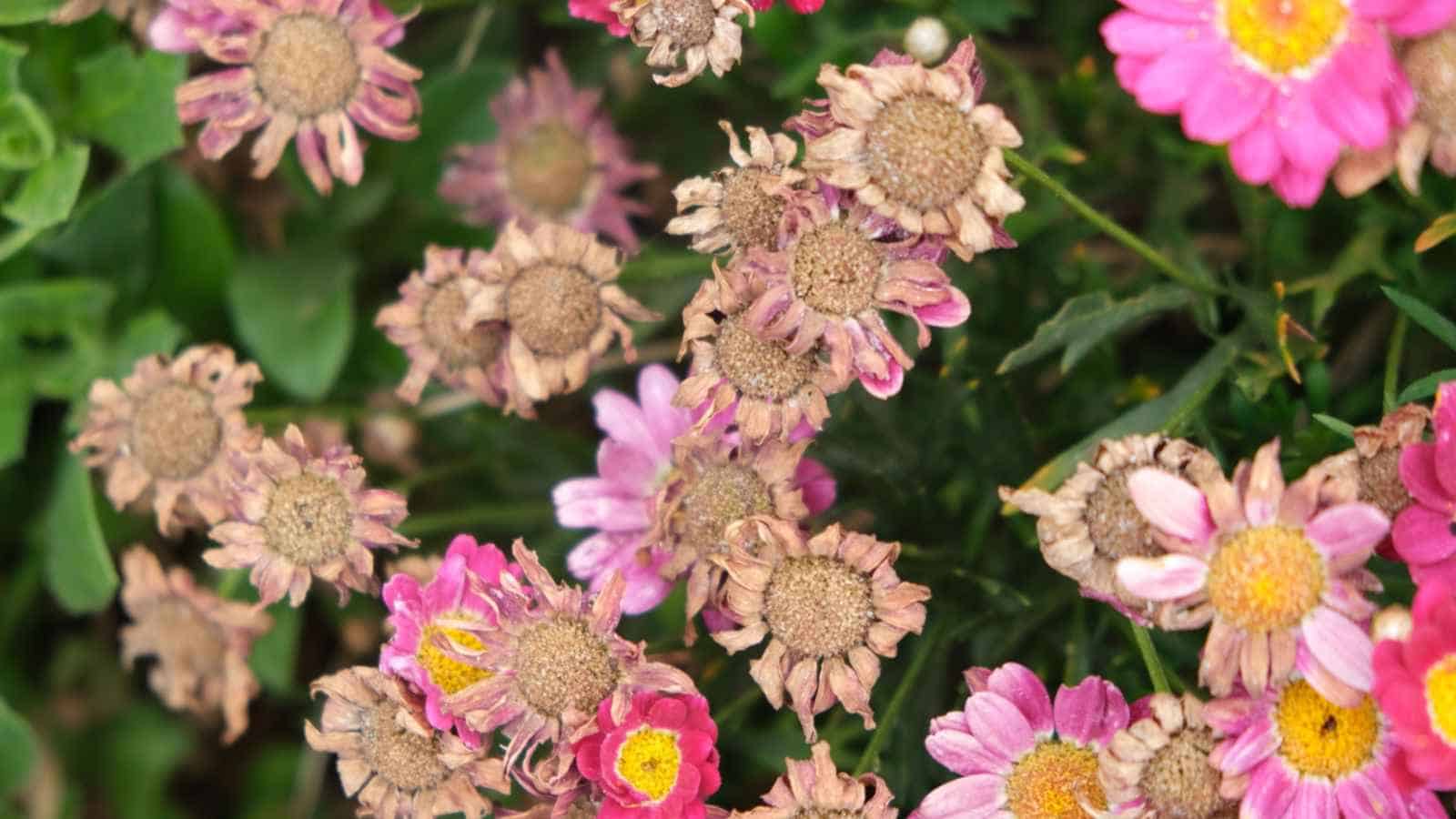
Stems of chrysanthemum flowers wilting could be a sign of too little water especially during the early spring and growing seasons.
However, wilting could also signify a more grave condition called verticillium wilt, a soil-borne fungal disease that clogs plant stems.
To rejuvenize your wilted chrysanthemums, increase the water frequency and ensure the pot has good drainage to avoid waterlogging.
Mums with No New Shoots
If your mums are not budding new shoots, they might be arguing with the overcrowded weeds or competing unwanted plants around them.
Regularly survey your garden, removing weeds that might be hogging the nutrients and pot space.
Other Flower Guides from Planet Natural:
Hibiscus Guide: How to Plant, Grow, and Care for Hibiscus
How to Plant, Grow, and Care for Anemone Flower (Windflower)

